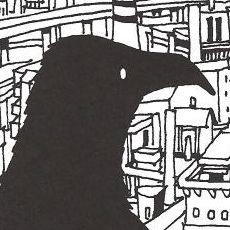Tag: mecha
-
Liking Muv-Luv Alternative: Total Eclipse? See also…
Read More →: Liking Muv-Luv Alternative: Total Eclipse? See also…Earth’s invaded, humanity’s out-matched and Japan’s moe legions are our first line of defence. Would you feel confident?
-
Being swept away
Read More →: Being swept awayI have many a faint and fond memory of Eureka Seven, but wasn’t sure how to feel about news of its sequel. It ended with a quite profound sense of finality, after all. Everything that needed to be said, was, and underscored with probably the finest insert song ever used in anime, too. I’m using…
-
Returning, being a superficial anime fan and Rinne no Lagrange
Read More →: Returning, being a superficial anime fan and Rinne no LagrangeIt’s been a while since my last post. Around a month, in fact. Through-out February, I took something of a break from anime. I’ve been keeping up with One Piece, but that’s about it. This wasn’t a planned thing, either. I just stopped watching anime. Winter hasn’t helped, either. Although a notoriously poor time for…
-
The scent of flames: Armored Trooper Votoms
Read More →: The scent of flames: Armored Trooper VotomsTo be honest, I doubt there is much I can say that will convince you to take a look at Armored Trooper Votoms. It’s an old series, with a heavy emphasis on war. Chirico is no Kamina. The characters are gritty and unrefined. When it can be hard to sit through just the 1 episode,…
-
For your consideration, Blue Comet SPT Layzner
Read More →: For your consideration, Blue Comet SPT LayznerMecha anime has always been a bit hit or miss for me. I’ll often find that I’m not as attracted to the mecha as I am to the science fiction stories they inhabit. That is to say, I enjoy a lot of good mecha anime because I enjoy a lot of good science fiction. I…
-
Free skies, and endless land
Read More →: Free skies, and endless landThe problem with writing an anime blog for any length of time is that I’m prone to repeating myself. I’ve had this ache to write about something, anything, over the last month or so, but there are only so many times I can say “this is good, that is bad” without feeling as though I’m…
-
Turn off your mind, unwind and see how high the cloudy sky. Xam'd, naturally.
Read More →: Turn off your mind, unwind and see how high the cloudy sky. Xam'd, naturally.Should I say Xam’d: Lost Memories is good? It’s better than good, and I know it’s not enough to say just that, but I have to be careful. Because I’m about ready to explode. Yes, there’s too much to say. This is what anime is capable of; it’s why I’m writing an anime blog. Ironically,…
-
Bokurano: … I really wish I could've died on the Earth I grew up on.
/
/ ReviewsRead More →: Bokurano: … I really wish I could've died on the Earth I grew up on.I finished Bokurano this weekend, just as planned. 24 episodes in 5 days isn’t bad at all, as I’ve never been one to enjoy marathoning through anime. After all, I ended up needing nearly 2 whole years to catch up with 300+ episodes of One Piece, so, starting and finishing Bokurano in a matter of…
-
Never knows best; my 'review' of FLCL
/
/ ReviewsRead More →: Never knows best; my 'review' of FLCLWriting this now, I’m reminded of people (some of them anime fans) who will often say that watching these funny Japanese cartoons isn’t “hip”, isn’t something to be proud of, but watching this show, I’m ready to call that bull-****. Anime can be stylish, hip, cool, fun, trendy and everything else under the sun, and…
-
Musical memories of Gurren Lagann, recalling a whimsical dystopia
/
Read More →: Musical memories of Gurren Lagann, recalling a whimsical dystopiaNot sure how I missed this, but the full soundtrack for Tengen Toppa Gurren Lagann was released recently; that’s 51 tracks of epic, exciting, heavenly music, and even better, it contains the one song I’ve be longing to hear since late-July. I’m talking about track 13 on Disc no.2; the translated title is “The Days…
